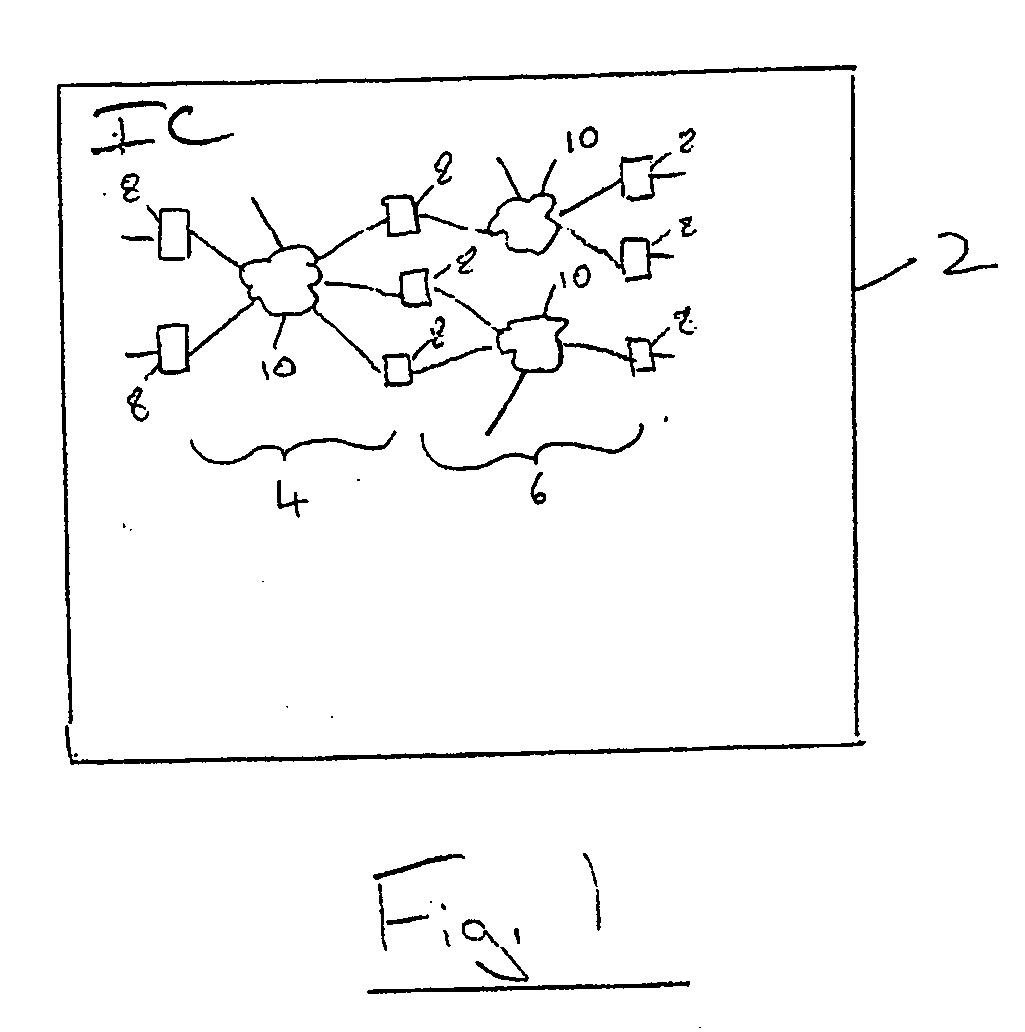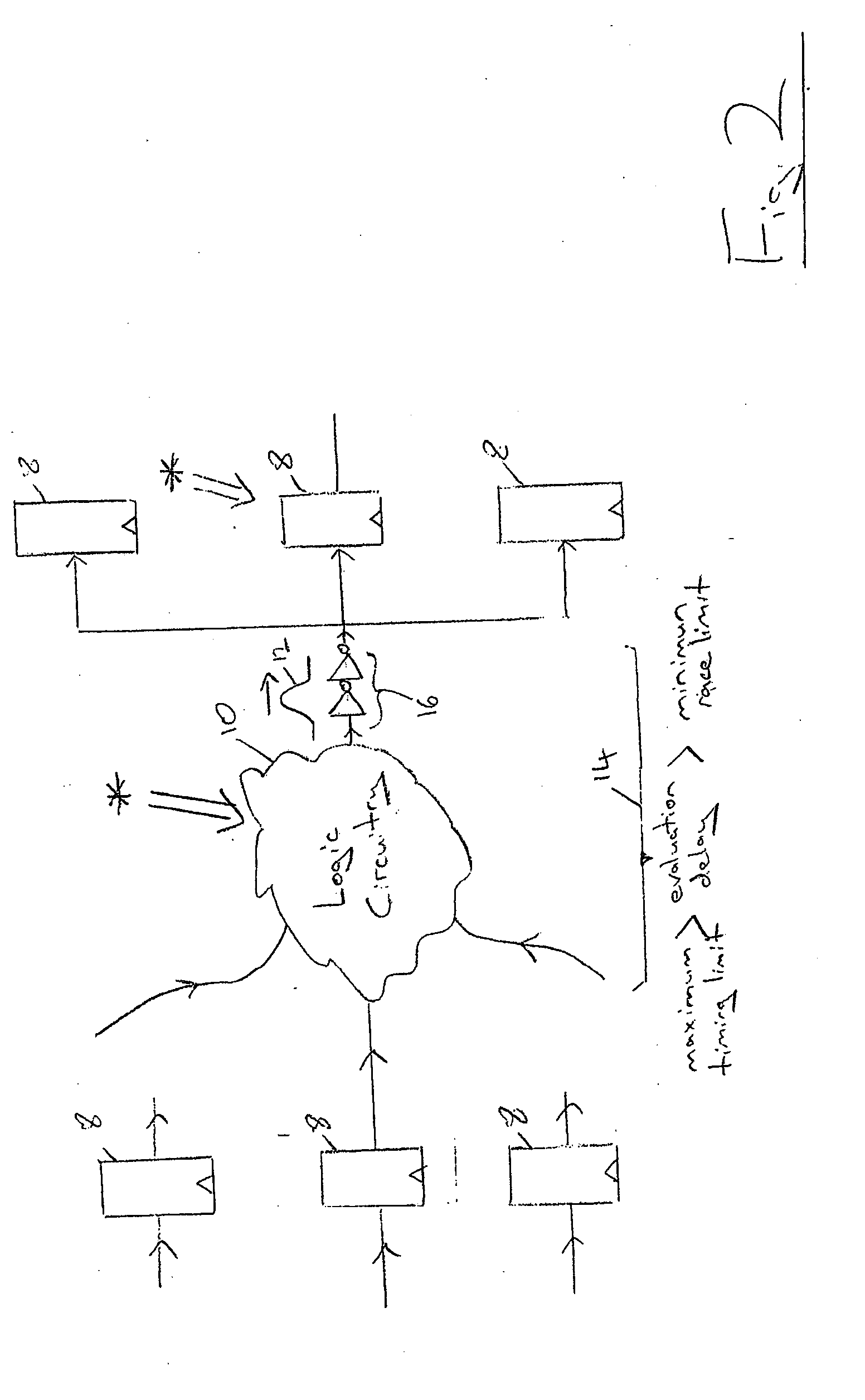Single event upset error detection within an integrated circuit
a single event and error detection technology, applied in the field of integrated circuits, can solve the problems of increasing the amount of circuit area needed and power consumed, unable requiring prohibitive computational and storage overhead to achieve the ability to detect and correct errors in multiple bits, etc., and achieves the effect of high probability of manifesting
- Summary
- Abstract
- Description
- Claims
- Application Information
AI Technical Summary
Benefits of technology
Problems solved by technology
Method used
Image
Examples
Embodiment Construction
[0034]FIG. 1 shows an integrated circuit 2 including pipeline stages 4, 6 extending between sequential edge-triggered storage elements 8 which may be in the form of flip-flops. Between the sequential storage elements 8 are respective instances of logic circuitry 10, which serve to receive signals from one or more preceding stages and generate signals to be passed to one or more succeeding stages. The period of time between the capture of signal values by the sequential storage elements 8 for successive clock periods is the time that is available for the logic circuitry 10 to evaluate its inputs so as to generate its outputs. A timing error will occur if the logic circuitry 10 within a particular processing stage at any time takes too long to evaluate its inputs to generate stable outputs and accordingly generates a transition in one of its outputs after that output has already been sampled by the next sequential storage element. In order to avoid this type of error, it is normal in ...
PUM
 Login to View More
Login to View More Abstract
Description
Claims
Application Information
 Login to View More
Login to View More - R&D
- Intellectual Property
- Life Sciences
- Materials
- Tech Scout
- Unparalleled Data Quality
- Higher Quality Content
- 60% Fewer Hallucinations
Browse by: Latest US Patents, China's latest patents, Technical Efficacy Thesaurus, Application Domain, Technology Topic, Popular Technical Reports.
© 2025 PatSnap. All rights reserved.Legal|Privacy policy|Modern Slavery Act Transparency Statement|Sitemap|About US| Contact US: help@patsnap.com



